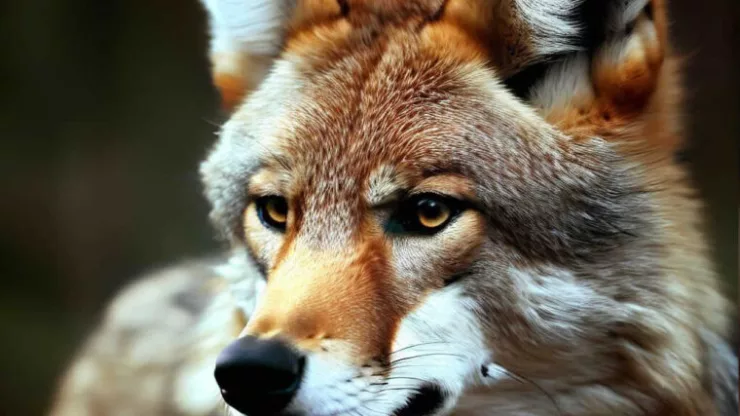Wolves are one of the most fascinating animals in the world. They have long been thought of as fearsome predators and symbols of the wild.
But there is so much more to these incredible creatures than meets the eye. Here are some interesting facts about wolves that you may not have known before.
-
Wolves are social animals
Wolves are known for their strong social bonds. They live in packs of up to 12 individuals, led by an alpha male and female.The pack works together to hunt, raise young, and defend their territory.
-
Wolves are excellent hunters
Wolves are skilled hunters, able to take down prey much larger than themselves.They work together as a team to outsmart their prey, using tactics such as surrounding and chasing to wear them down.
-
Wolves communicate through howls
One of the most iconic sounds of the wilderness is the howl of a wolf.Wolves use howls to communicate with each other over long distances.
Each pack has its own unique howl, which helps to identify them to other wolves in the area.
-
Wolves have a keen sense of smell
Wolves have an incredible sense of smell, which they use to track prey and communicate with other wolves.They have up to 300 million scent receptors in their noses, compared to just 5 million in humans.
-
Wolves can run up to 40 mph
Despite their relatively short legs, wolves are incredibly fast runners.They can run up to 40 mph, making them one of the fastest land animals in North America.
-
Wolves are important to their ecosystems
Wolves play a vital role in maintaining healthy ecosystems.They help to control the populations of prey animals like elk, deer, and caribou, which in turn helps to prevent overgrazing and damage to vegetation.
-
Wolves are not a threat to humans
Despite their fearsome reputation, wolves are not a threat to humans.In fact, there have been very few documented cases of wolves attacking humans in North America.
Most wolves are shy and will avoid contact with humans whenever possible.
-
Wolves are not just found in the wilderness
Although wolves are most commonly associated with the wilderness, they can also be found in suburban and even urban areas.In some parts of the world, wolves have learned to adapt to living near human populations, scavenging for food and avoiding contact with people.
In conclusion, wolves are fascinating creatures with a rich and complex history.
They play an important role in the ecosystems they inhabit, and their social bonds and hunting tactics are truly remarkable.
Despite their fearsome reputation, they are not a threat to humans and can even be found living near cities.
Next time you hear the howl of a wolf, remember all the amazing things that make these creatures so special.
FAQ
Do wolves make good pets?
No, wolves do not make good pets. They are wild animals and require a highly specialized environment and care.
It is illegal in many places to keep wolves as pets.
How can I tell the difference between a wolf and a coyote?
Wolves are larger than coyotes and have a broader head and muzzle. Wolves also have longer legs and larger paws than coyotes.
Are wolves endangered?
Some species of wolves, such as the red wolf and the Mexican wolf, are endangered.
However, the gray wolf has made a successful recovery in many parts of the United States and is no longer listed as endangered.

I am a fun fact enthusiast and creator of Facts On Tap.
I love to share my knowledge and curiosity with readers and inspire them to learn something new every day.
When I’m not writing, I enjoy traveling, reading, and playing trivia games with my friends.




